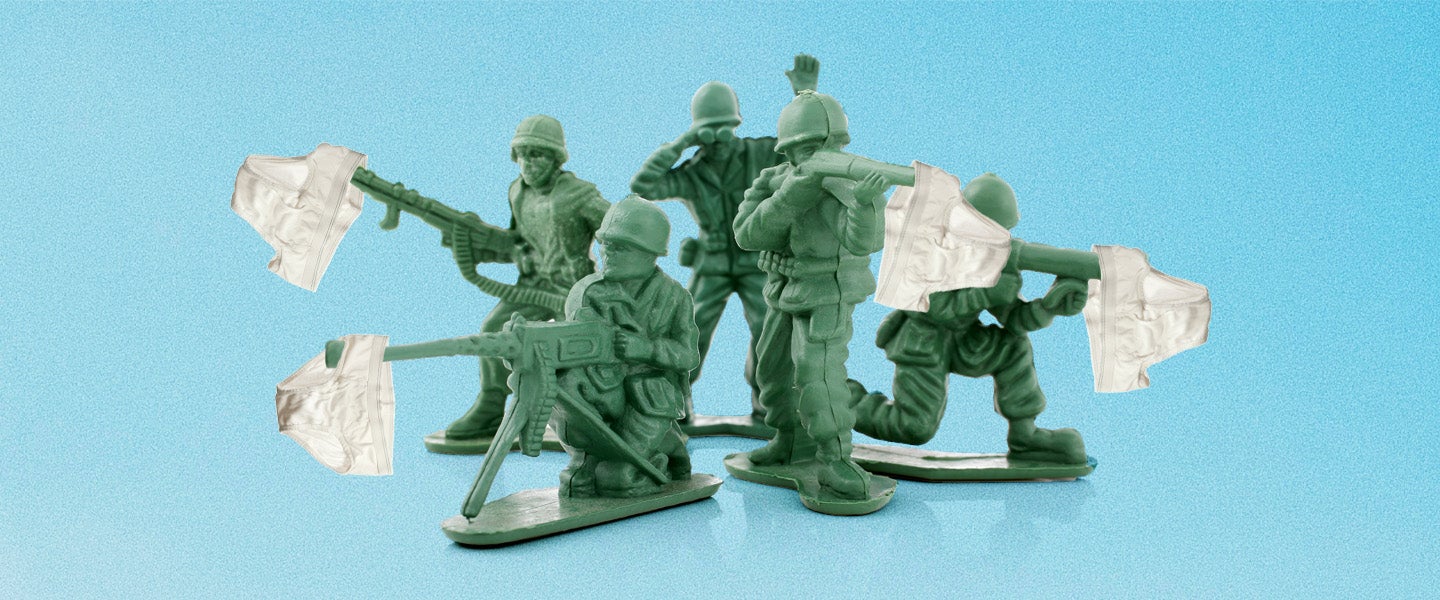For the entirety of his eight years in the ROTC and Army, Charlie Jasper didn’t spend a single moment constrained by underwear. After all, he was a commando himself, and “any man who doesn’t go commando in the Army is insane — or Mormon,” he tells me. In fact, the now 35-year-old only accepted underwear into his life in 2012 when he began wearing a suit to his first civilian job.
Jasper is part of a long line of military men who have spent their service time “going commando,” a term that was first coined on college campuses in the 1970s when men returned from fighting in Vietnam. Per the British Forces Broadcasting Service (BFBS), wearing briefs in the humid jungles of Vietnam “would sometimes lead to a fungal infection which affects the skin of your genitals, inner thighs and buttocks.”
As such, “the phrase ‘going commando’ likely evolved when military personnel ditched their undies to prevent the condition or to stop chafing,” BFBS reports, adding that troops would also often operate for months in the jungle without any way of “cleaning their skivvies.” And so, they’d ditch their underwear instead.
The thing is, this actually violates dress code. “Service members must wear approved undergarments,” explains Erik Bucci, a staff sergeant in the Marines from 1999 to 2004. “If you’re having a uniform inspection, military parade or official ceremony, tighty-whities are the code.” He does clarify, however, “in combat and in training, troops have more options as to how they want to support or free the boys.”
For instance, Bucci’s unit was “often required to do regular 15- to 26-mile hikes sometimes in full gear as part of readiness training. If the proper undergarments weren’t worn in these conditions, service members could get chafing in the crotch areas, sometimes leading to the dreaded ‘swamp ass.’”
Bucci admits that, like “going commando,” “swamp ass” sounds funny, but both have some dire consequences. “Swamp ass is a seriously uncomfortable condition where a rash can develop from chafing, resulting in fungal issues around the crotch,” he tells me. “The chafing is real, and tight-fitting cotton undies are the main cause.”
Nevertheless, rules are rules, and Bucci enacted harsh consequences if any of his men were caught going commando during uniform inspection. “They’d be given punitive fire watch, which is basically standing guard duty all night while everyone else gets to sleep,” he explains.
So what’s the middle ground between nothing and cotton tighty-whities?
Bucci says most troops, including himself, “wore athletic compression boxer briefs, especially during intense activity.” And for his part, Matt Mikolas, a former combat infantryman serving in Iraq, says he’d “hate to imagine the condition I would have been in running around in that heat without some kind of buffer between ‘the boys’ and my legs.”
“You often sweat so profusely that it actually leaves visible residue of the salt from your body on the exterior of the uniform,” he continues. “Even when the underwear is so saturated with sweat that you could ring them out, they still prevent a ‘sticky situation’ that would be far more uncomfortable long-term.”
That’s not to say, though, that going commando is a dying tradition. “In combat, I’ve seen guys grab their rifles in urgent situations while wearing only towels or underwear,” Mikolas explains. “And I can assume that more guys, given the choice of only one garment to cover himself with and hitting the ground running, would opt to don their BDUs [battle dress uniforms] and save a few seconds by skipping the chonies.”
Which is more or less Jasper’s other big argument for a skivvy-free existence. That is, when you pack the bag you’re about to live out of for weeks or months on end, you follow a simple logic. “Ounces mean pounds, pounds mean pain,” he argues. “Rolled-up boxers take up space and soak up water. So why do that when you can add ammo, food, drinking water, bandages or batteries instead?”
Clearly, when life’s priorities are on the line, underwear doesn’t stand a chance.

